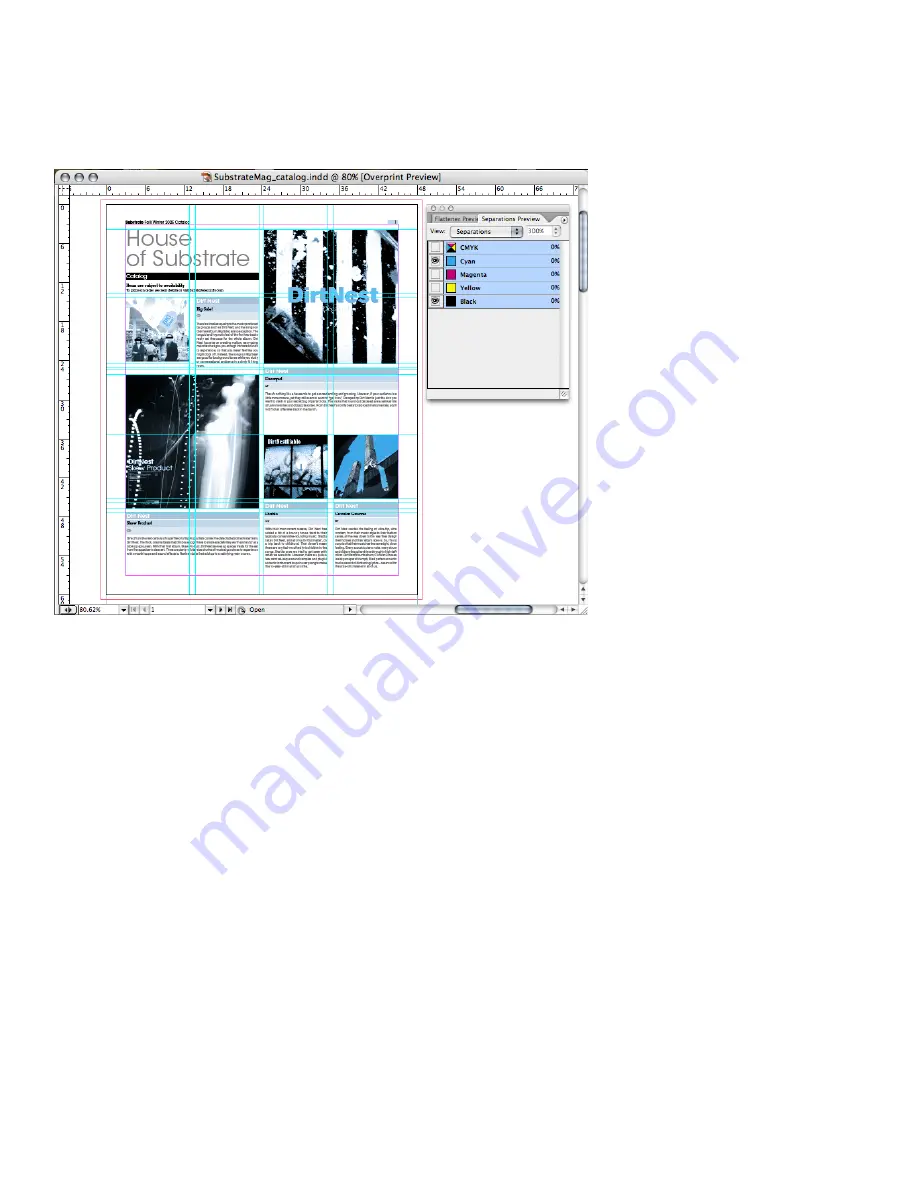
0
Switching from PageMaker to InDesign CS2
Using the Separations Preview palette
InDesign CS2 lets you preview color separations, ink coverage limits, and overprinting by using
the Separations Preview palette (Window > Output > Separations). You can view a single separa-
tion and hide all others by clicking the name of the color you want to view. By default, areas of
color appear in black. To change this, deselect Show Single Plates In Black in the palette menu.
Clicking the box to the left of each separation name alternately shows and hides it.
Use the Separations Preview palette (Window > Output > Separations) to preview color separations on-screen.
In this example, the black and cyan plates are displayed.
Previewing separations on your monitor allows you to check the following:
•
Varnishes and other coatings.
Because varnishes are transparent, they can be difficult to pre-
view on-screen. When you preview a varnish separation by itself, the varnished areas appear
in black.
•
Rich black.
Previewing separations lets you identify areas that print as rich black or process
black (K) ink mixed with color inks for increased opacity and richer color.
•
Ink coverage.
Too much ink on the paper can cause drying problems. Ask your commercial
printer for the maximum ink coverage of the press you will be printing on. You can then
preview the document to identify areas where ink coverage exceeds the press’s limit.
•
Overprinting.
You can preview how blending, transparency, and overprinting appears
in color-separated output. You can also see overprinting effects when you output an
InDesign CS2 document to a composite printing device. This output is useful for proofing
color separations.



















